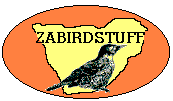 SAfrican
Birding Spots
SAfrican
Birding Spots
 SAfrican
Birding Spots
SAfrican
Birding Spots
Bushmanland
Bushmanland is a vast area of semi-desert karoo scrub and gravelly plains. To the north of the region permanent grass covered sand dunes occur. To the South, the region borders on the Cape Fynbos and several mountain ranges break the harsh terrain, as they do to the west. The West is known as Namaqualand or Nama Karoo (succulent Karroo).
This region is host to a large number of Southern African endemics, and is particularly sought after as the best place to see a number of uncommon lark species. This description covers Bushmanland from Kenhardt and Kakamas in the north to Calvinia in the south and Springbok and Port Nolloth in the West.
Birds
The region is best known for its larks. Red Lark is completely restricted to the area, while Blackeared Finchlark has a distribution centred on the region. Stark's and Sclater's lark are found in central bushmanland and Northwards, while Barlows Lark occurs on the Namaqualand Coast north of Port Nolloth. Other Larks whcih occur include Longbilled, Karoo, Thickbilled and the thick-billed version of Sabota Lark (Bradfield's Lark). Ludwig's Bustard is common and Karoo Korhaan are readily seen. Characteristic raptors include Booted Eagle - common to the South, Black Harrier and Lanner Falcon. Cinnamonbreasted Warbler inhabits rugged rocky areas, while Karoo Eremomela is to be found almost anywhere in Karroo scrub. Southern Grey Tit, Blackheaded Canary, Layard's Titbabbler, Karoo and Tractrac Chat are all specials of the area. Bradfield Swift is a localised but not uncommon resident and Namaqua Warbler is to be found in reedbeds along streams and rivers. Rufous-eared Warbler, Namaqua Sandgrouse and Ground Woodpecker are also to be found within the region, while the seasonal pans in the dry interior often offer spectacles of Greater Flamingo, Pied Avocet and Black-necked Grebe.
Birding
A visit to the area requires long distance travel, along remote routes. Much of the birding is done from the roadside, although a number of public nature reserves exist on the fringes of the region. Because of the heat, an early start is essential.
The central Bushmanland region is arid with most rain falling in Autumn, while the Nama Karroo is largely within the winter rainfall region. Many species are nomadic and respond to the erratic rainfall patterns. The quality of birding is very much dependent on timing and can vary from dismally dissapointing to spectacular.
Go to recent Bushmanland Trip Report (Sept '97)
Specialist guide to the region